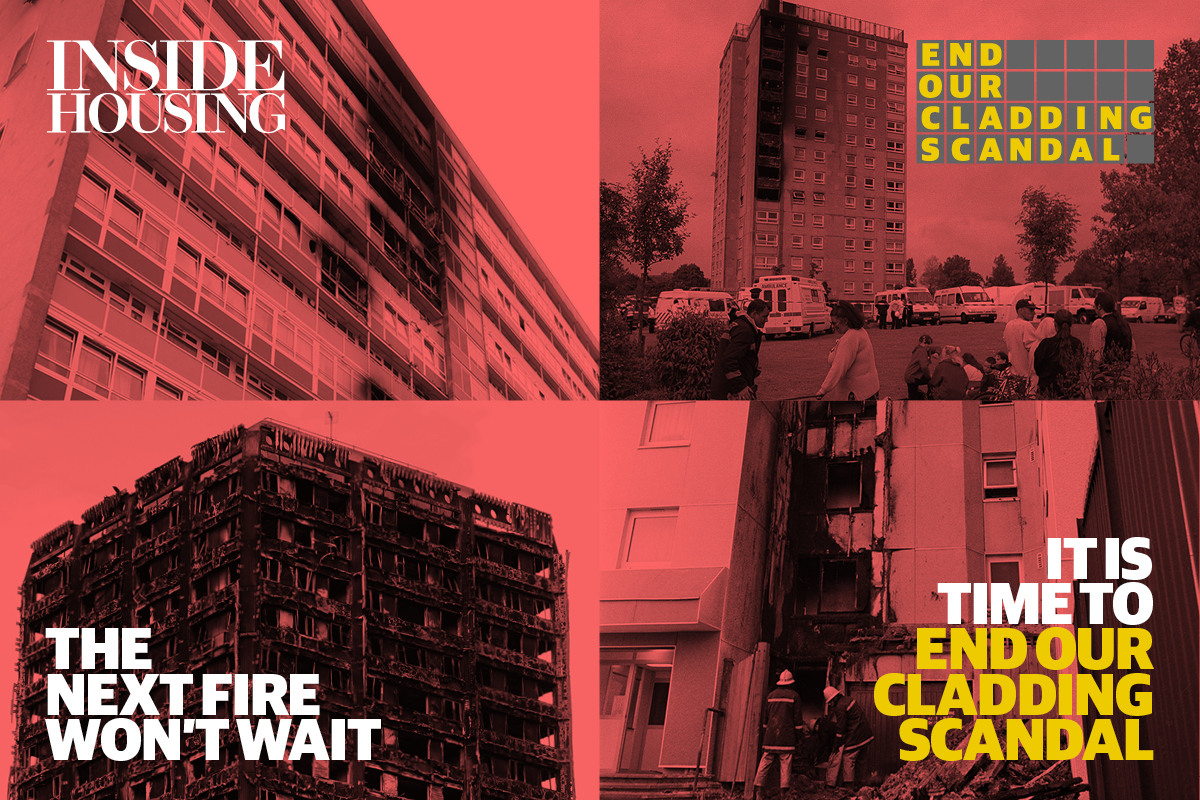Nearly 2,800 buildings register for government’s £1bn Building Safety Fund
The number of registrations for the government’s £1bn Building Safety Fund has hit 2,784 applications, according to latest government figures.
In an update published yesterday, the Ministry of Housing, Communities and Local Government (MHCLG) confirmed that as of 25 September there had been 1,857 registrations from buildings in London and 1,197 from buildings in the rest of the England.
The 2,784 figure far outstrips the 1,700 towers with high-risk cladding systems the government estimates there are across the UK. Even then, the government believed that the £1bn fund would cover only a third of those buildings, with the bill for remediating all of them expected to cost between £3bn and £3.5bn.
In the Budget in March, chancellor Rishi Sunak announced that the government would create a £1bn fund to pay for the remediation of buildings taller than 18m that are wrapped in non-aluminium composite material (ACM) cladding. ACM was the material used on Grenfell Tower.
Registration for the fund for private blocks opened at the start of June and closed at the end of July. The fund opened in July for social housing providers whose costs would otherwise be passed on to leaseholders.
According to the figures, 1,709 of the registrations made do not include the basic information needed to assess whether they are eligible, while 628 buildings have provided some but not all of the information required.
As part of the application process, buildings must submit information and supporting evidence to show the height of their building and the materials used. This would need to be supported by evidence such as as-built drawings, an operation and maintenance manual or a report by a suitably qualified construction professional.
MHCLG reported that so far only 447 had provided this information correctly so eligibility could be checked, with 65 of those already proceeding with a formal application for funding and 73 being found ineligible and withdrawing their bid.
Once eligibility has been confirmed and the formal application stage begins, legal and project-related due diligence will be carried out by Homes England or the Greater London Authority to ensure that the government is paying the right entities for the work.
Tower Hamlets was the local authority with the most applications, with 282 blocks across the east London borough registering. Manchester was second with 136 applications and Newham was third with 130.
Earlier this week Inside Housing joined with Grenfell survivors, residents of blocks with dangerous cladding and the Sunday Times to relaunch the End Our Cladding Scandal campaign, which calls on the government to take urgent national action to fix the spiralling crisis.
The campaign has called on the government to take 10 steps to help fix the crisis, which includes forward funding necessary remediation work for all buildings regardless of height and reclaiming the cost from those responsible through a new levy. This is modelled on a successful approach used in Victoria, Australia, which faces similar cladding issues.
The campaign also calls for the government to cover the costs of fire safety defects in buildings, not just cladding, as well as the costs for interim safety measures such as waking watches or the installation of fire alarms. Social housing providers must also have access to the fund, the campaign demands.
An MHCLG spokesperson said: “Our priority is making homes safer, faster, which is why we’re providing £1 billion to speed up the removal of unsafe non-ACM cladding through our Building Safety Fund.
“We are already working to progress eligible applicants to the Fund to the next stage – so we can begin the remediation process as quickly as possible.
“It’s disappointing so many building owners – who are responsible for making sure their buildings are safe – have been unable to provide the basic information we need to progress and we urge them to do so as quickly as possible.”
Number of registrations by local authority
Picture: Getty
Tower Hamlets: 282
Manchester: 136
Newham: 130
Westminster: 127
Southwark: 126
Birmingham: 109
Greenwich: 102
Wandsworth: 86
Lambeth: 85
Camden: 73
Leeds: 68
Islington: 59
Salford: 54
Hackney: 53
Haringey: 52
Liverpool: 50
Bristol: 46
Newcastle upon Tyne: 41
Croydon: 39
Bournemouth, Christchurch and Poole: 39
10 steps to End Our Cladding Scandal
Based on the recommendations of the Housing, Communities and Local Government Select Committee and backed by a range of sector bodies and MPs from across the political spectrum, these are Inside Housing’s 10 steps to End Our Cladding Scandal:
- The government must lead an urgent national effort to remove all dangerous cladding from buildings by June 2022.
- The Building Safety Fund must cover all buildings, regardless of height, and a range of internal and external fire safety defects, not just cladding.
- The government should provide the money up front and then seek to recover it from any responsible parties or via a temporary levy on development.
- Social housing providers must have full and equal access to the fund.
- The government must compel building owners or managers to be honest with residents about fire safety defects.
- The government should cover the cost of interim safety measures.
- The government should act as an insurer of last resort and underwrite insurance where premiums have soared.
- A fairer, faster process is needed to replace the EWS form and funding is necessary to ensure all buildings requiring a form are surveyed within 12 months.
- Mental health support must be offered to affected residents.
- Protecting residents from historic and future costs must be a key commitment of new building safety legislation.










